These Standards-Based Bell Ringers for Civics & American Government cover such topics as the Executive and Judicial Branch, the Bill of Rights, Voting Rights Amendments, the Civil Rights Era, the Rule of Law, and Landmark Supreme Court Cases, reinforcing the key concepts you’ll be teaching in your American Government curriculum! Suitable for middle and high school students, these daily Bell Ringers engage students with the material, so that they’re thinking critically and creatively, forging real connections — and preparing for the End of Course Exam, too!
The Full Collection of Civics Bell Ringers:
Quarter One | Quarter Two | Quarter Three | Quarter Four
These 10 weeks of Bell Ringers include questions for each of the five days of the week; 50 prompts in all. Concepts and key vocabulary are introduced in easy-to-understand, engaging language, and the questions range from critical thinking and test prep to illustration activities and introspective reflections on the material.
Each week is centered around a different benchmark from the Florida Middle School Civics Curriculum, but these topics can apply to Civics lessons throughout the country, and the questions are broad enough that they will appeal to high school students as well. Each week is centered around a different topic, so you can mix them around, use them in whatever order fits your schedule!
Here are the topics and their corresponding Florida State Standards:
1. Article II: The Executive Branch | SS.7.CG.3.8 Executive Branch
Considering the requirements and responsibilities of the presidency, students describe a problem facing this country that they would solve if President; reflect on whether there should be a maximum age limit for the commander-in-chief, and consider why it’s important for Congress to have the power of Impeachment in case of presidential wrongdoing.
2. Famous American Presidents (Bonus Week!)
In this fun bonus week, students analyze a quote by George Washington, consider the presidents that have been immortalized on our currency and who they would like to see on a coin or bill, and match Presidents with fun facts (Which president kept an elephant at the White House?)
3. Article III: The Judicial Branch | SS.7.CG.3.9 The Judicial Branch
Students match types of legal cases with the level of the federal court in which the case would be tried (District, Circuit Court of Appeals, or the Supreme Court), consider what our country would look like today if, throughout history, we’d had more women on the Supreme Court, and, after learning about judicial review, consider what school rule they consider unfair and would like to overturn.
4. Landmark Supreme Court Cases | SS.7.CG.3.11 Landmark Supreme Court Cases.
Students argue the importance of the Supreme Court’s power of judicial review, see if they can remember all their Miranda Rights, reflect on whether they agree with the Supreme Court’s consensus on Hazelwood v. Kuhlmeier, and, after reading about In re Gault, consider why Constitutional rights should apply to children as well as adults.
5. The Rule of Law | SS.7.CG.1.9 Limited Government: The Rule of Law.
Students reflect on whether everyone is truly “above the law” in America, determine which of three quotes from the Constitution upholds the principle of the rule of law, and consider whether or not the presidential pardon actually violates the rule of law.
6. The Bill of Rights | SS.7.CG.2.3 The Bill of Rights and Other Amendments.
The first 10 Amendments to the Constitution are reviewed in this week’s Bell Ringers. Students consider why it’s important for people to have rights the government cannot infringe on, answer test prep questions related to Anti-Federalists and their push for the Bill of Rights, and illustrate the five freedoms protected by the First Amendment.
7. First Amendment Freedoms | SS.7.CG.2.3 The Bill of Rights and Other Amendments.
Students describe a time they have exercised one of the five freedoms protected by the First Amendment; match images to the First Amendment freedoms they represent, and reflect on whether prayer should be allowed in public schools.
8. Know Your Rights! Constitutional Amendments Safeguarding American Liberty | SS.7.CG.2.3 The Bill of Rights and Other Amendments.
Students describe why it’s important for citizens accused of crimes to have fundamental protections like due process, connect our right to an impartial jury with our Civic Duty to attend jury service, illustrate the main ideas behind the Fourth, Fifth, Sixth, and Eighth Amendments, and, in talking about cruel and unusual punishment, describe a time they believe they received a punishment beyond what they deserved.
9. Your Vote, Your Voice: Voting Rights Amendments | SS.7.CG.3.6 Voting/Civil Rights Amendments
Students analyze a quote by Susan B. Anthony and consider why it’s important that everyone in a society should have the right to vote; they reflect on what they can do to become an informed citizen once they’re 18 and able to vote; as well as list the pros and cons of mandatory voting.
10. Separate is not Equal: Supreme Court Cases in the Civil Rights Era | SS.7.CG.3.11 Landmark Supreme Court Cases.
This Bell Ringer, focused on Supreme Court Cases of the Civil Rights Era, asks students to analyze a Martin Luther King Jr. quotation, rewrite the main idea of the 14th Amendment in their own words, and includes descriptions of Plessy v. Ferguson and Brown v. Board in a larger conversation about why “separate” is inherently “unequal”.
Download a free sample week of Bell Ringers here!
This resource comes as a non-editable PDF, and also contains an optional Bell Ringer Cover Sheet and Student Contract, as well as a handy grading sheet with student and teacher reflection!
A digital version is also available through TPT Easel! TPT Easel Activities can be assigned directly to your Google Classroom, or you can generate a link to share with students via email or your school’s LMS!
What other teachers are saying about this resource:
“Students can work at their own pace”
Great tool to use to help students prepare to engage in the lesson. Easily build a bell-ringer notebook for easy access for questions. Students can work on at own pace.
★ ★ ★ ★ ★
— Teresa M.
“A great way to start class”
My students and I found this to be a great way to start class. They knew to come in and would have it out and started before the tardy bell even rang!
★ ★ ★ ★ ★
— Christy F.
“Aligns well to the standards”
Excellent resource! Fun and creative topics to introduce or reinforce civic topics. Aligns well to the standards.
★ ★ ★ ★ ★
— Megan Baran
More Happy Teacher Products You Might Enjoy:
✩ Standards-Based Bell Ringers for Civics & American Government | Quarter One
✩ Standards-Based Bell Ringers for Civics & American Government: Quarter Two
✩ FULL YEAR BUNDLE: Standards-Based Bell Ringers for Civics & American Government
Become a happy teacher — join the email list!
Never miss a new product or a sale by signing up for an email subscription! I send periodic emails recapping new products, updates, and upcoming sales. Plus, you’ll get a free week of Civics Bell Ringers just for signing up!
Enter your email below to get started.
You can also follow Happy Teacher Resources on social media: Instagram | Facebook | Pinterest

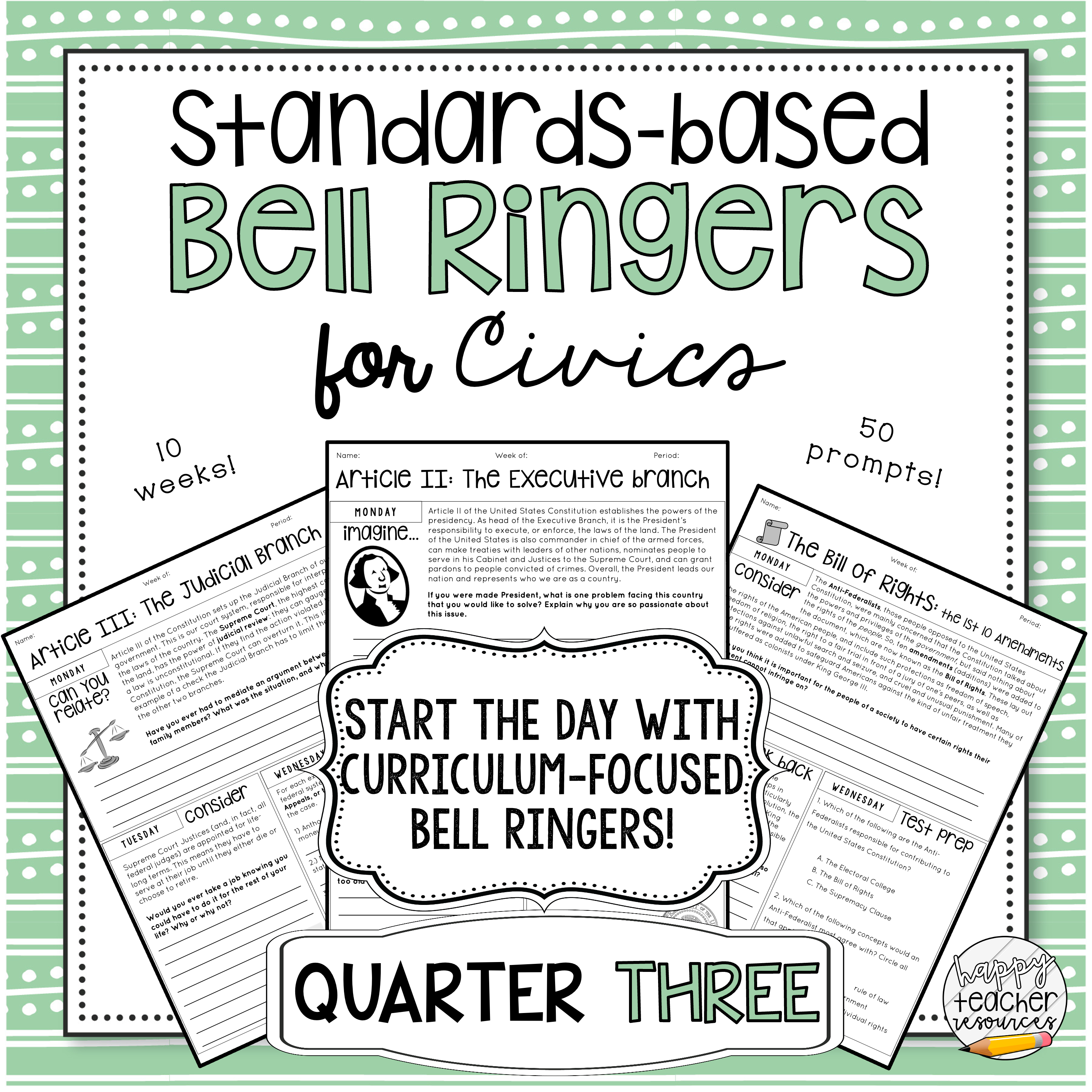

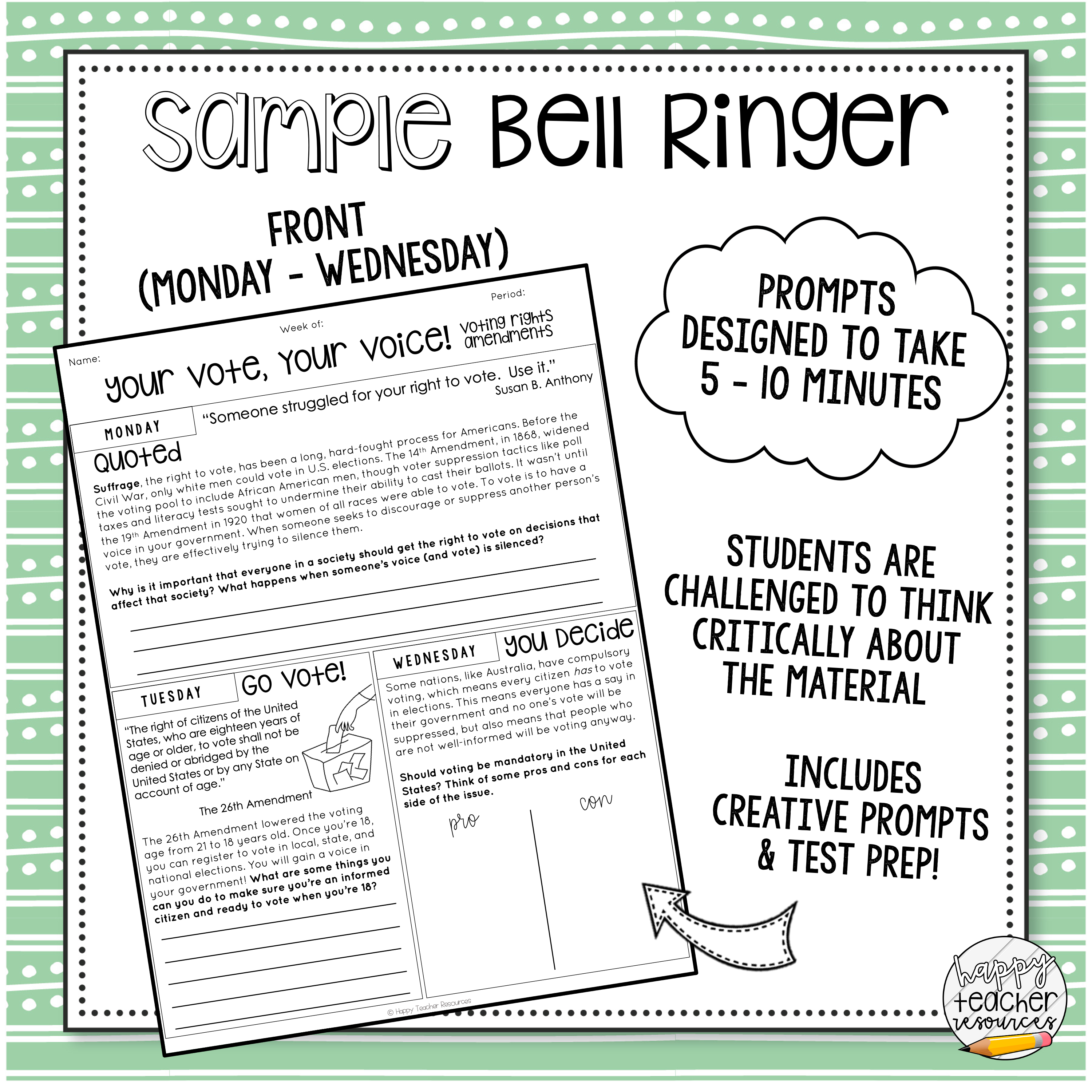
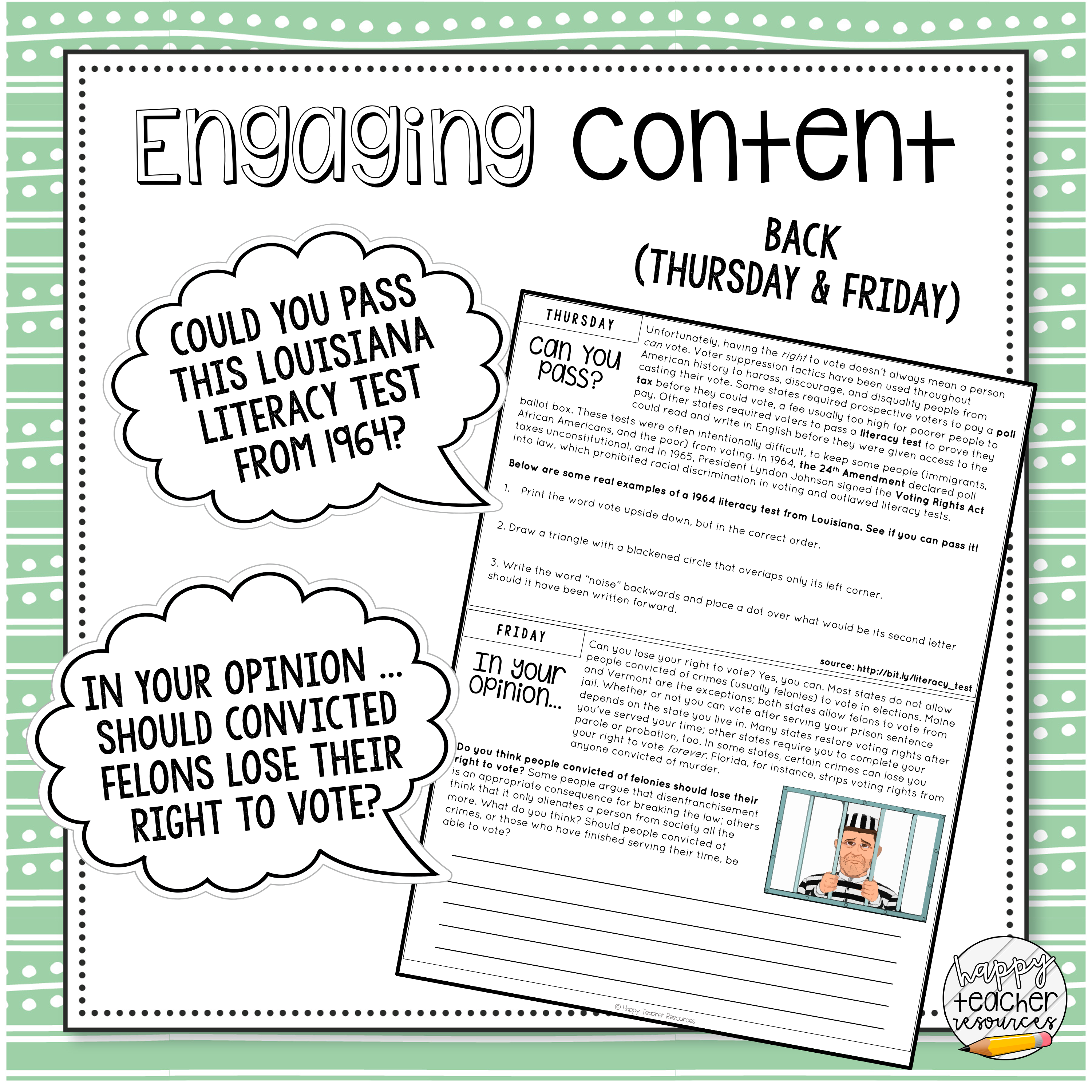
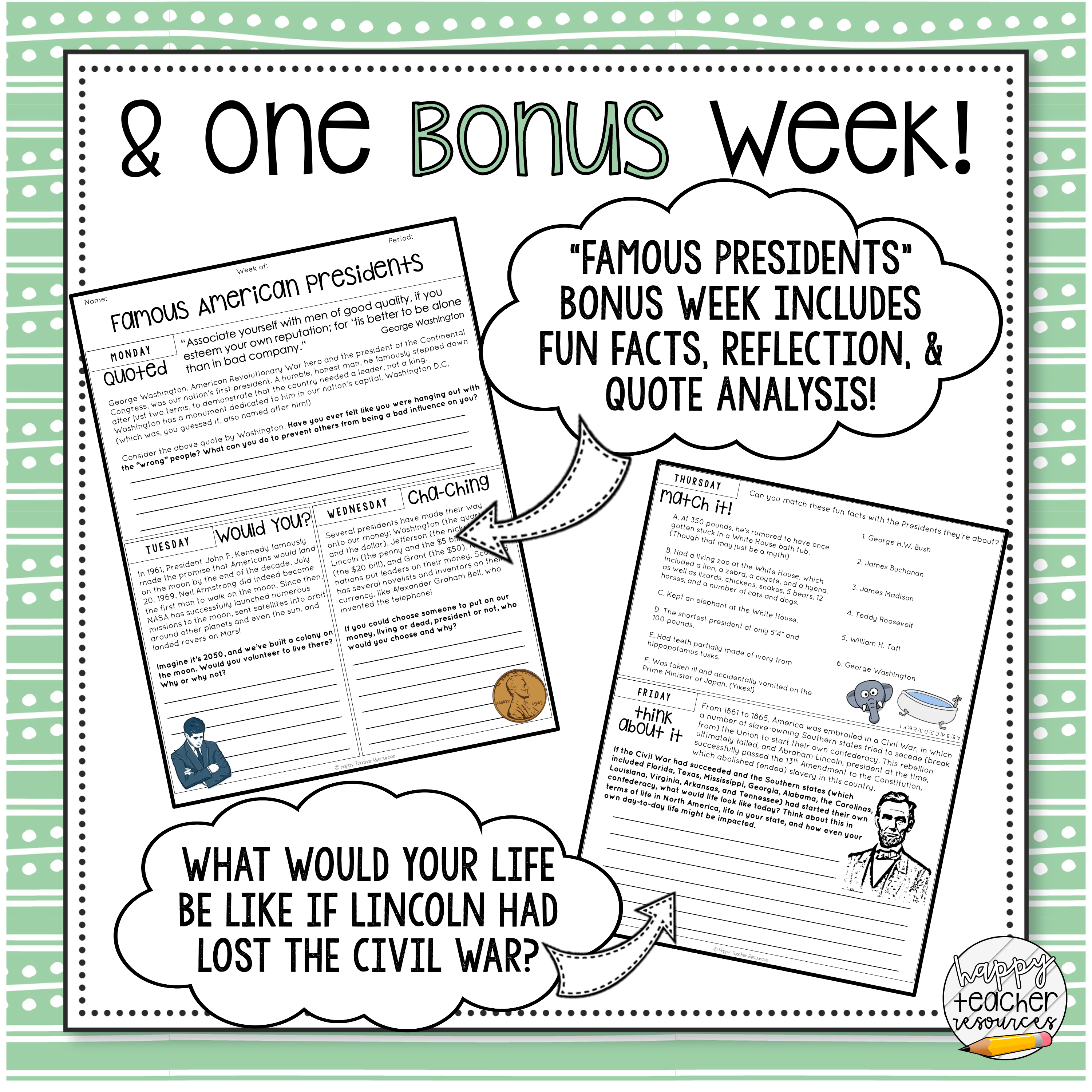


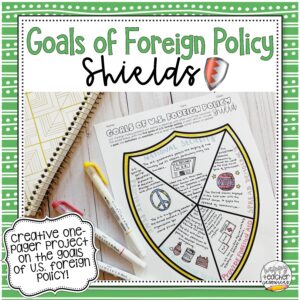
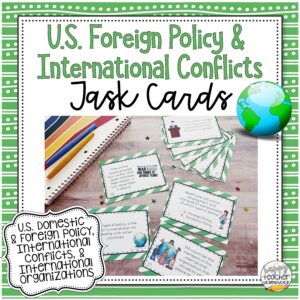

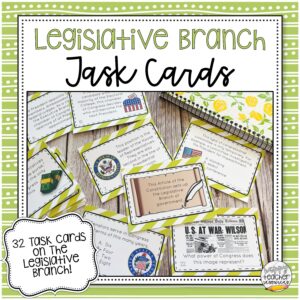
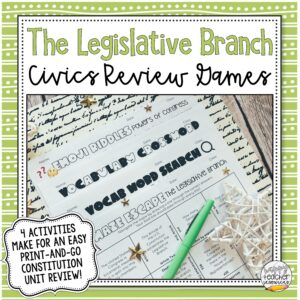
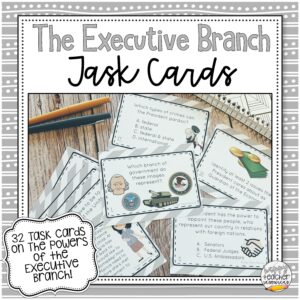
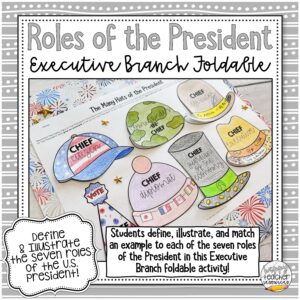
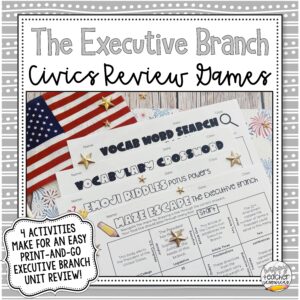

Reviews
There are no reviews yet.